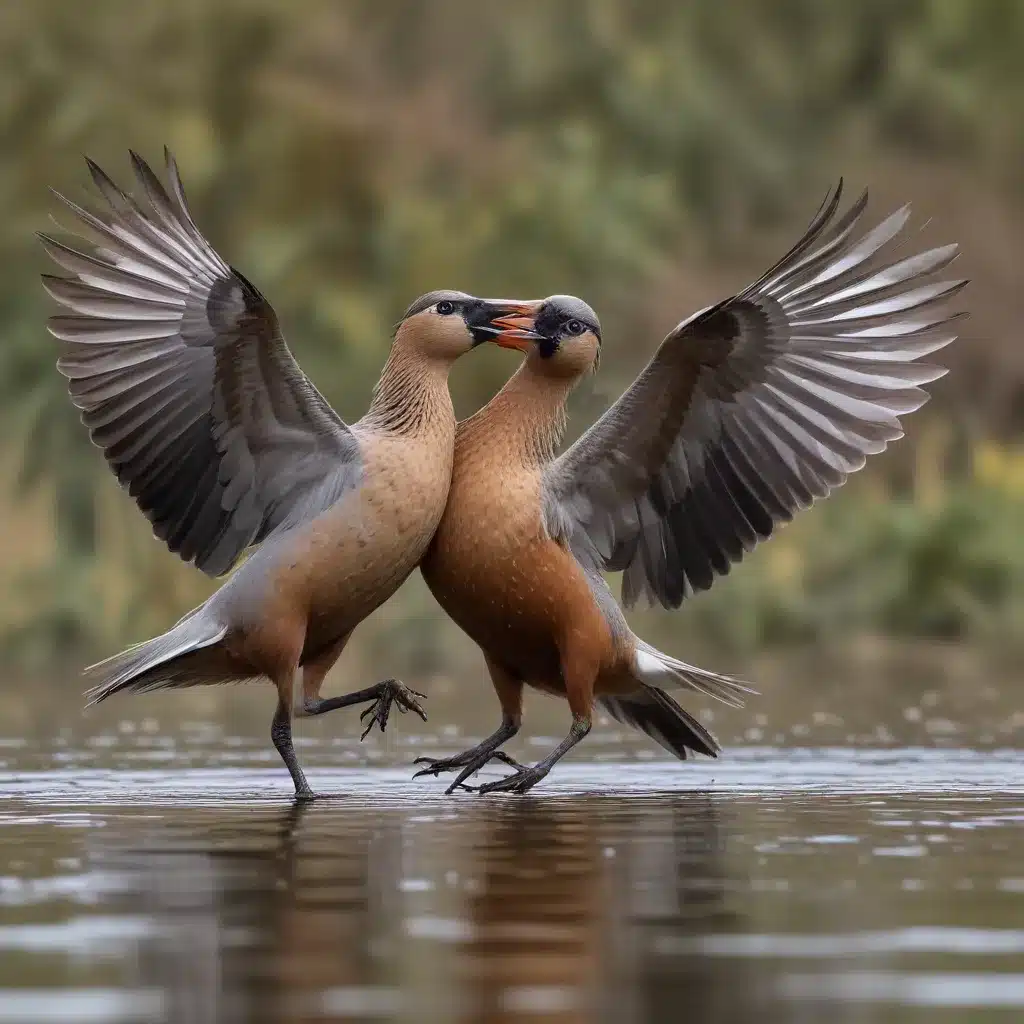
Exploring the Intricate Dance of Avian Courtship: Insights into Breeding Behaviors
Birds are renowned for their captivating courtship rituals, a mesmerizing dance that unfolds in the natural world. As an experienced avian caretaker, I’m excited to take you on a journey through the intricate world of avian mating behaviors, revealing the remarkable adaptations and strategies birds employ to secure a lifelong partner.
Avian Mating Displays
At the heart of avian courtship lies an intricate repertoire of visual and acoustic displays. These elaborate performances serve as a means of communication, allowing potential mates to assess each other’s fitness and genetic quality.
Visual Displays: Birds have evolved a stunning array of visual cues to attract a mate. From the magnificent plumage of the peacock to the graceful aerial maneuvers of the magnificent frigatebird, these displays showcase the male’s physical prowess and overall health. Females carefully observe these demonstrations, meticulously evaluating the suitor’s vibrancy, symmetry, and acrobatic abilities as indicators of his suitability.
Acoustic Displays: The melodious songs and calls of birds play a crucial role in the courtship process. Male songbirds, for instance, use their enchanting vocalizations to establish territories and lure potential mates. Females, in turn, carefully listen to these performances, favoring individuals with the most complex and diverse songs, as these traits often signify the male’s genetic fitness and vocal abilities.
Interestingly, some species, like the bowerbirds, go a step further, constructing elaborate structures called “bowers” to impress their mates. These intricate creations, adorned with colorful objects, serve as a testament to the male’s resourcefulness, creativity, and dedication – all essential qualities in a successful breeding partner.
Nest-building Strategies
The construction of a suitable nesting site is a critical component of avian courtship and breeding success. Birds meticulously select their nest locations, considering factors such as protection from predators, access to food and water, and proximity to potential mates.
The nest-building process itself is a remarkable feat of engineering, with each species employing unique techniques and materials. Some birds, like the weaverbirds, masterfully weave intricate structures using grasses, twigs, and leaves. Others, such as the bald eagle, may repurpose existing nests or construct their own elaborate platforms high in the treetops.
By demonstrating their nest-building prowess, male birds showcase their resourcefulness, problem-solving skills, and ability to provide a safe and nurturing environment for their offspring. Females, in turn, carefully evaluate these nests, often incorporating the male’s construction efforts into their mate selection process.
Breeding Ecology
The breeding ecology of birds is a fascinating tapestry of seasonal cycles, opportunistic strategies, and dynamic parental care dynamics.
Reproductive Cycles: Many bird species time their breeding seasons to coincide with favorable environmental conditions, such as increased food availability and optimal nesting sites. This synchronization ensures the survival and successful fledging of their offspring. However, some birds, like the opportunistic doves and pigeons, are capable of breeding year-round, adapting their strategies to the resources available in their environment.
Parental Care Dynamics: Avian parental care is a remarkable display of cooperation and shared responsibility. In monogamous species, both the male and female birds take turns incubating the eggs and provisioning the chicks with food. This collaborative approach not only increases the chances of offspring survival but also strengthens the pair bond, contributing to the long-term success of the breeding pair.
Evolutionary Perspectives
The evolution of avian courtship and breeding behaviors is a captivating area of study, shedding light on the underlying mechanisms of sexual selection and adaptation.
Sexual Selection Theories: Intersexual selection, where individuals of one sex choose mates based on desirable traits, and intrasexual competition, where individuals of the same sex compete for access to mates, have both played crucial roles in shaping the elaborate courtship displays observed in birds. These processes have driven the development of vibrant plumage, intricate vocalizations, and sophisticated nest-building skills – all of which serve as indicators of a potential partner’s fitness and genetic quality.
Adaptation and Speciation: The remarkable diversity of avian courtship and breeding behaviors has also contributed to the speciation and adaptation of bird species. Reproductive isolating mechanisms, such as distinct mating rituals or habitat preferences, have allowed closely related species to maintain their genetic integrity and evolve distinct characteristics over time.
Conservation Implications
The intricate dance of avian courtship and breeding behaviors is not only a captivating spectacle but also a vital component of bird conservation efforts.
Threats to Breeding Populations: Habitat loss, fragmentation, and human disturbance can have devastating impacts on the breeding success of bird populations. Disruptions to their nesting sites, courtship rituals, and parental care can severely compromise the survival and reproduction of these species.
Management Strategies: Effective conservation strategies must address the specific breeding requirements of different bird species. This includes monitoring breeding success, restoring and maintaining suitable habitats, and minimizing human-induced disturbances during critical breeding periods. By understanding and preserving the intricacies of avian courtship and breeding behaviors, we can ensure the continued survival and thriving of these remarkable creatures.
The world of avian courtship and breeding behaviors is a true marvel, showcasing the incredible adaptations and strategies birds have developed over millions of years of evolution. From the mesmerizing visual displays to the complex parental care dynamics, each aspect of this intricate dance underscores the vital role birds play in the delicate balance of our ecosystems. By exploring and preserving these captivating behaviors, we can not only deepen our appreciation for the natural world but also contribute to the conservation of these extraordinary avian species. For more information on bird care and breeding, be sure to visit Mika Birds Farm.


